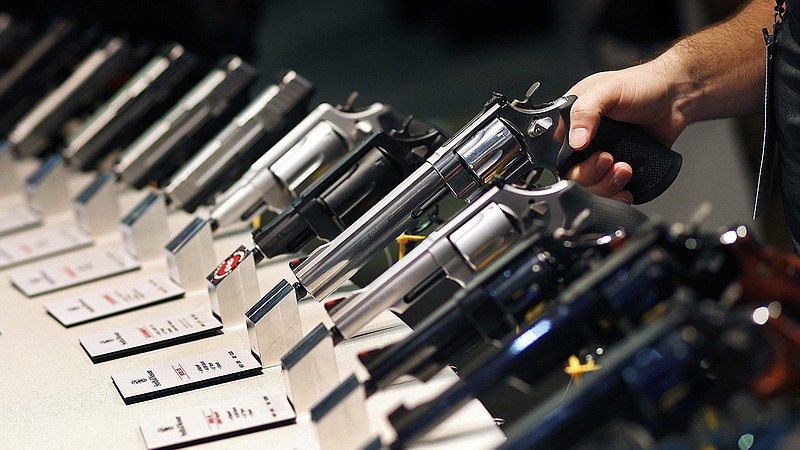Behind the Gun Counter: Buy Once, Cry Once

The market for firearms and related accessories is filled by a diverse array of manufacturers and suppliers, offering products to meet every conceivable need and price point. Many gun owners look at the $3,000 rifles and $5,000 scopes in their local gun shops and wonder if that top-end gear is really worth as much as a used car, or if the prices are inflated due to marketing hype. In the firearm community, particularly among its newer members, there is always a temptation to buy the cheapest version of whatever we need. In my years working behind the counter at a gun store, I have seen numerous cases of a customer going against our recommendations and buying the absolute worst equipment (usually optics); in this blog post, I will discuss my thoughts on “cheaping out” and three reasons why it can be a bad idea.
1. Don’t let your life depend on gear you can’t trust
“What’s the cheapest pistol you have?” Where I work, we hear that question so often that we made a “gun store bingo card” with that as one of the squares. There is of course a suspicious implication that the prospective customer has some nefarious deed planned and therefore just needs anything that can fire a few rounds, but most of the time, the question is actually asked in earnest. Our standard answer goes something like, “How little are you willing to spend on something which contains tiny explosions that close to your face?” That usually makes the customer think twice.
Now, I’m not saying that a $600 Glock is somehow “three times as good” as a $200 Hi-Point, but there is usually some relation between a firearm’s price point and its level of quality. For a manufacturer to undercut its competitors, the money has to be saved somewhere. At the very low end of any market, that money is saved by skimping on things like basic functionality and quality control for the sake of cheaper manufacturing. From firearms and ammunition to parts and optics, comparative testing has shown time and again that the cheapest products in their respective price classes are never as durable and reliable as more mainstream options. Even if your extreme budget no-name product seems to perform perfectly well brand new, it is far less likely to stand up to long-term use and abuse as something just a little bit more expensive from a more reputable brand. Sights lose zero and break, pistols have internal parts fail, and pump-action shotguns can lose their reliability after what should be a normal amount of use.
In my experience, one of the most common motivations for buying a first firearm is personal protection, but that is by no means the only reason we choose to own them. Even if a particular gun of yours is just for recreation and not for defensive use, it can still kill you by failing at an inopportune time. The 9×19mm Parabellum round is rated for peak pressures of about 35,000 psi, more than eleven times that of many rocket engines. Do you really want to risk losing your fingers to that rusty old Lorcin from the pawn shop just because you got a good deal on it?
2. Give yourself an enjoyable experience
If you’re reading this, there’s a good chance you have a full-time job and other responsibilities that take up most of your waking hours. It can be difficult to set aside the time to go out to the shooting range for some practice and recreation, and the last thing you want to do is spoil that because the stuff you brought doesn’t work. I have dealt with many a disappointed customer whose range trip was ruined by faulty equipment he or she bought online from a no-name brand to save a few dollars. That airsoft-tier reflex sight you bought on Amazon won’t hold zero under repeated recoil from even a 5.56, and when that’s keeping you from putting rounds on target, you won’t be a happy camper.
Even if a low-quality product functions as intended, it can still be the weakest link in the proverbial chain and prevent you from using the rest of your gear to its fullest potential. I had a coworker who long thought his favorite rifle was inaccurate until he switched out the $139 scope on it with a nicer, but still reasonably priced, replacement. His accuracy problems didn’t come from a bad barrel or lack of skill, but from the poor glass quality of the inferior optic. Even though the new scope he bought had a much smaller objective lens and lower top-end magnification, its better light transmission yielded a clearer and sharper image that allowed him to push the rifle—and himself—to shoot tighter groups.
I mention optics because they are a common area where people think they can get something “just as good” for a fraction of the price, but people do the same with other parts and accessories all the time. A wobbly bipod, temperamental magazine, or uncomfortable holster probably won’t get you killed, but they can give you a much harder time using other gear of yours that works just fine.
3. Cheaping out isn’t actually cheaper
The example of my coworker changing out scopes illustrates how the “buy once, cry once” principle can actually make financial sense. If he had just bought the better scope in the first place, he would have had more time to use it while saving the price of the cheap scope. Now he has a low-quality optic he already paid for but can’t use, and even if he sells it secondhand, he’ll still be lucky to get half of what he paid for it. In my part of the country, where the AR platform still reigns supreme in its mostly unadulterated glory, it’s a running joke that everyone who’s owned one long enough has a box sitting around full of spare parts that were on the gun when it left the factory. There’s a lot of truth to this, and it’s really unfortunate to see hundreds of dollars’ worth of triggers, furniture, and so many other miscellaneous parts collecting dust in someone’s basement.
You’ve already read this far, so I hope you won’t mind indulging me for one more example. I’ve seen a particular model of drop-in AR-15 handguard for sale online, in gun stores, and at gun shows in my area; I won’t mention who makes it, but it’s a two-piece quad-rail that looks vaguely similar to a Knight’s Armament M4 RAS. Having installed it for customers before, I can attest to its inherently flawed design, shoddy manufacturing quality, and laughable failure to conform to the MIL-STD-1913 rail specifications. Many less knowledgeable AR-15 owners have fallen prey to the temptation of its very low price, only to be disappointed to end up with a wobbly rail to which some accessories won’t even attach properly. There’s a more respected manufacturer who sells a competing handguard that is superior in every way—it attaches securely, weighs less, has more features, and is much better made overall. Here’s the kicker: the cheap handguard is the cheapest in its class, but its high-quality competitor only costs about twice as much. In other words, if you buy the cheap handguard and then inevitably have to replace it with anything else on the market, you are now out more money than if you had just bought the nicer one to begin with.
That wasn’t just a hypothetical scenario. I have seen the same thing play out time after time with guns, accessories, and even soft goods such as range bags. When a customer buys the cheapest version of something just because the number on the tag is lower, that customer will very often come back a few weeks or a few months later to shell out for the one he or she really wanted to begin with.
Conclusion
I’m not saying you have to spend your hard-earned money on the absolute best of the best in everything, because there is indeed a point of diminishing returns. Before you make any major purchase for your shooting hobby or anything else, make sure to do your research and find out what product will best suit your needs and last you a long time. That information is very valuable, and you can get much of it for free at your local gun shop or online from reputable review sites. You’re too smart to let yourself be fooled by a bad product for what looks like a good price.
